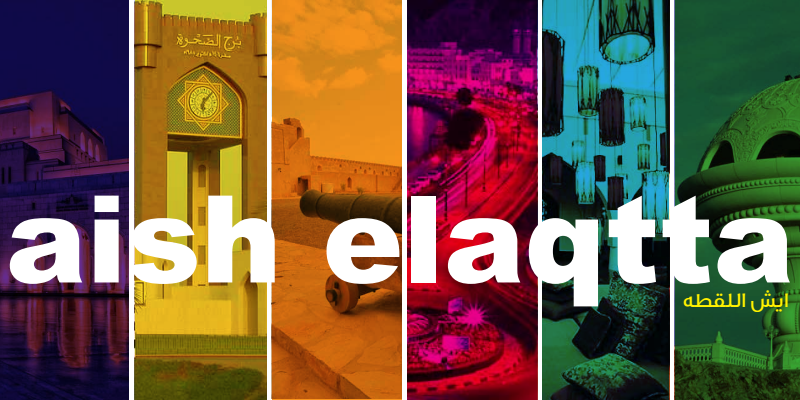
 One of the friendly workers at the museum
One of the friendly workers at the museum
 The highlight of the whale hall is this giant skeleton of a male sperm whale which was stranded at Barka (65 kms to the north) in September of 1986. It was about 25 years old and 14 meters long. The bones alone weigh 3.5 tonnes! The whale itself, while living, would have weighed about 35 tonnes!
The highlight of the whale hall is this giant skeleton of a male sperm whale which was stranded at Barka (65 kms to the north) in September of 1986. It was about 25 years old and 14 meters long. The bones alone weigh 3.5 tonnes! The whale itself, while living, would have weighed about 35 tonnes! All the bones are original except the teeth and digits (replaced by wood), and the cartilage (replaced by plaster). The earbones are missing. It has been painted to preserve it and to reduce the oily smell.
All the bones are original except the teeth and digits (replaced by wood), and the cartilage (replaced by plaster). The earbones are missing. It has been painted to preserve it and to reduce the oily smell. Skull of a young killer whale stranded at Ras Marbat in June, 1989 (Killer whales are rarely reported near Oman.)
Skull of a young killer whale stranded at Ras Marbat in June, 1989 (Killer whales are rarely reported near Oman.) This skeleton is of a common adult male dolphin. It was beached near the Bustan Palace Hotel in March 1990. It was 2.5 meters long.
This skeleton is of a common adult male dolphin. It was beached near the Bustan Palace Hotel in March 1990. It was 2.5 meters long. This skeleton is of a very young “false killer whale” which was drowned in a net off Ghubra (near the museum) in April 1987. It was 2 meters long. I had never even heard of “false killer whales” before entering this museum! They are actually large dolphins and are fairly common in Oman’s waters. The large conical teeth resemble those of the larger Killer Whale, hence its name.
This skeleton is of a very young “false killer whale” which was drowned in a net off Ghubra (near the museum) in April 1987. It was 2 meters long. I had never even heard of “false killer whales” before entering this museum! They are actually large dolphins and are fairly common in Oman’s waters. The large conical teeth resemble those of the larger Killer Whale, hence its name. This skeleton is of a young dwarf sperm whale which was beached near Muscat in August 1989. It was just over 2 meters long and the museum reports that “it is probably the only skeleton of this species to be exhibited anywhere in the world”. Shy and slow-moving, it is the smallest to be called a “whale”. Less than 3 meters long, but robust, with its head resembling that of a Sperm Whale. Its small and needle-like teeth on the jaw are for catching cuttle fish which it hunts at the edge of deep water in all warm seas.
This skeleton is of a young dwarf sperm whale which was beached near Muscat in August 1989. It was just over 2 meters long and the museum reports that “it is probably the only skeleton of this species to be exhibited anywhere in the world”. Shy and slow-moving, it is the smallest to be called a “whale”. Less than 3 meters long, but robust, with its head resembling that of a Sperm Whale. Its small and needle-like teeth on the jaw are for catching cuttle fish which it hunts at the edge of deep water in all warm seas. This is a picture of the odd-looking “Sea Cow” or “”Dugong”. It is the only sea-dwelling truly vegetarian mammal in the world. It is the only surviving species in its family and is in danger of becoming extinct. It breathes through 2 valved nostrils on the top of its nose while the body remains submerged. A peculiar fleshy nose-disc enables it to seize seagrasses and their roots in the silty seabed. A female Dugong may live for 70 years, but she is very slow to breed. She doesn’t have her first calf till she is at least 10 years old and has only one calf at a time, every 3 to 7 years.
This is a picture of the odd-looking “Sea Cow” or “”Dugong”. It is the only sea-dwelling truly vegetarian mammal in the world. It is the only surviving species in its family and is in danger of becoming extinct. It breathes through 2 valved nostrils on the top of its nose while the body remains submerged. A peculiar fleshy nose-disc enables it to seize seagrasses and their roots in the silty seabed. A female Dugong may live for 70 years, but she is very slow to breed. She doesn’t have her first calf till she is at least 10 years old and has only one calf at a time, every 3 to 7 years. The largest of the living cetaceans is the Blue Whale. One at over 31 meters (101 feet) long, would weigh 160-200 tonnes, the size of at least 30 of the largest existing land mammals-the elephant. Only water can support such a massive animal. Compare this with one of the smallest cetaceans – the finless porpoise-barely 1.6 meters (5 feet) and 45 kgs.
The largest of the living cetaceans is the Blue Whale. One at over 31 meters (101 feet) long, would weigh 160-200 tonnes, the size of at least 30 of the largest existing land mammals-the elephant. Only water can support such a massive animal. Compare this with one of the smallest cetaceans – the finless porpoise-barely 1.6 meters (5 feet) and 45 kgs. Picture in the museum of a stranded Sperm Wall (They say that an injured or ill cetacean may beach deliberately to avoid drowning, a fear all marine animals may have. Interesting!)
Picture in the museum of a stranded Sperm Wall (They say that an injured or ill cetacean may beach deliberately to avoid drowning, a fear all marine animals may have. Interesting!) Various bones of whales, dolphins and porpoises (cetaceans) including ribs, vertabrae, skulls, craniums, humeri, pelvises, radii, phalanges and scalpulas/scalpulae.
Various bones of whales, dolphins and porpoises (cetaceans) including ribs, vertabrae, skulls, craniums, humeri, pelvises, radii, phalanges and scalpulas/scalpulae. Stages of burial, cleaning and transport from Burka to the Natural History Museum of the Sperm Whale Skeleton (Physeter Macrophalus) 1986-1987.
Stages of burial, cleaning and transport from Burka to the Natural History Museum of the Sperm Whale Skeleton (Physeter Macrophalus) 1986-1987. Stages of assembling and mounting of the Sperm Whale skeleton 1988-1990
Stages of assembling and mounting of the Sperm Whale skeleton 1988-1990

Chedi Summer Promotion




- "The suppression of ideas and thought is a major sin, and we will never allow anyone to stifle freedom of thought." (His Majesty Sultan Qaboos Bin Said)
Recent Comments
- Anonymous on Istanboly Turkish Restaurant, Al-Khuwair & Al-Khoud
- Anonymous on Daiso Japan, Muscat Grand Mall
- Anonymous on The Mysterious “White Sultan of Oman”
- Anonymous on Daiso Japan, Muscat Grand Mall
- article243 on Al-Mamour Castle, Oman
- Anonymous on Al Jimi Mall, Al Ain, UAE – Wed., March 26th
- Kyle Parker on Womens Beach Volleyball Bronze Medal Match at 2nd Asian Beach Games
- Wall painting in Dubai on School Gates and Wall Paintings Outside Nizwa
- travelatr on One Last Hurrah at the Chedi!
- Husnain on Job’s Tomb (So They Say…) in Jabal Qara near Salalah, Oman
- Husnain on Job’s Tomb (So They Say…) in Jabal Qara near Salalah, Oman
- Anonymous on Wakan Village in Wadi Mastal in the Wilayat of Nakhal
- Shah nijam on Intensive IELTS Preparation Course
- Palesa on The 1st Tiger I’ve Seen in Oman!! Well…kind of!
- Sharmin Zulfiqar on “I am Child” Exhibition by Ghailani – Awareness of Child Abuse
Blogroll
- Aish Elaqtta (What's Happening?)
- Around the World in 365 Cheeses
- Arta's Blog
- Atomic Kaleidoscope
- Church in Oman
- Dhofarigucci
- Emma in Dubai
- Expat in Oman (Filipina)
- Expat in the City (Allan)
- Expat Woman – Dubai
- Expat Woman – Oman
- FatSu (Food & Restaurant Blog)
- How to Live Like an Omani Princess
- Miriams Omani Adventures
- Muscat Confidential
- Muscat Jet Driver
- Muscat Mutterings
- My Oriental Passion
- Naija Expat Wife
- Notes Home (Expat Life)
- Oman Coast
- Oman Collective Intelligence
- Oman? Oh My!! (Wanda in Oman)
- Omanly (Blog on Tourism)
- Parallel Universe – Dazed in Dubai
- Pumpkin Polar Bear
- Sorry Wrong Blog
- Sultanaat Oman
- Susan Al Shahri in Salalah
- The Duncan Adventures
- The Rogue and Peasant Slave
- This Man's Journey
- Travel with Pedro
- Y Magazine (Pulse of Oman)
Top Posts
- Not Impressed with the New Al Sawadi Beach & Resort Entrance Fees!
- The Haunted House of Muscat?!
- "Wa Habibi" (My Beloved)
- Spy Camera in Ladies Toilet in Khoula Hospital?!
- "Meet Oman's Bloggerati" - Y Magazine
- Largest Candy Store in the World - Candylicious, Dubai
- Breakfast at PAUL, Muscat Grand Mall
- Duqm Floating Hotel Veronica
- Our Salalah Tour (Part 4 of 5): Scenic Road to Fizayah Beach
- Scorpions in Oman!!!
-
Join 557 other subscribers
Categories
- Ads (57)
- Amazing Grace (38)
- Amouage (1)
- Animals (44)
- Art (117)
- Beach Games (8)
- Beaches (97)
- Blogging (55)
- Books (20)
- charity (45)
- church (149)
- concert (38)
- culture (159)
- desert (5)
- Dubai (23)
- Duqm (4)
- education/language (44)
- fashion (1)
- Fireworks (9)
- Forts (61)
- Fun Things To Do (94)
- Gadgets Toys and Products (16)
- guest speaker (8)
- Health (33)
- History (103)
- Hotel (67)
- Humor (54)
- Ibri (57)
- Language Problems (27)
- Magazines (12)
- Masirah Island (5)
- Mountains (47)
- Movies (37)
- Musandam (9)
- Muscat Festival (28)
- Museums (34)
- Muttrah (40)
- Nizwa (3)
- Oman in the News (102)
- parenthood (46)
- Parks (23)
- Photo Challenge (33)
- Products (13)
- Rants (49)
- restaurants (141)
- ROP (5)
- Royal Opera House Muscat (23)
- Salalah (43)
- Scuba (17)
- Sermon (32)
- Sifah (6)
- Sinkholes (5)
- social events (71)
- Sohar (12)
- Some Thoughts (240)
- Sports (45)
- Teaching Overseas (1)
- The Bible (105)
- tourist sites (165)
- Toys (1)
- Turtles (7)
- UAE (46)
- Uncategorized (223)
- Wadis (37)
- Waterfalls (8)
Blog Stats
- 2,043,300 hits




Them are some really cool bones. Any Jonah sightings? 😀
The bones were quite a sight. Of course not all of them have been captured by my camera either. I highly recommend anyone living in Oman to check it out.
About the “Jonah sightings” comment…I know you’re probably just joking around but a LOT of people scoff at the whole “Jonah being swallowed by a large fish story”. Here is a pretty good answer to that question: http://www.christiananswers.net/q-eden/edn-t004.html
And another one here: http://www.liberty.edu/wwwadmin/includes/search/qanda/QandA_Results_elmertowns.cfm?Searched=&AID=274&DisplayResults=1
Hi Andy,
I really like all the images yo have of whales in Oman.
I’m making a video for the local museum to help them raise money for an expansion and renovation project. They have a whale, but the museum is too small to display it. May I receive your permission to use your Flase Killer whale photo in the Southland Museum and Art Gallery video I am making?
Kind regards,
Patrick Winters
Hello, Patrick!
Please feel free to use the False Killer whale photos (or any others) for your expansion and renovation project! I hope you end up raising lots of money for the museum! If you get a chance, please let me know how it goes! 🙂
Pingback: Don’t Bother with the Sayyid Faisal Bin Ali Museum!!! | Andy in Oman